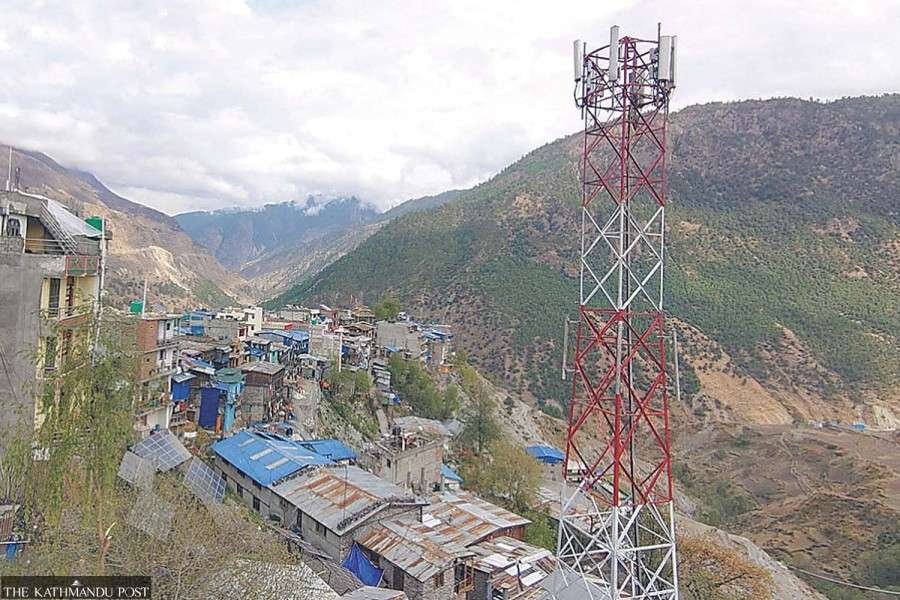Karnali Province’s ambitious ‘Digital Karnali’ initiative, aimed at transforming the region into Nepal’s first fully digital province, is facing growing criticism from local officials and citizens. Despite high-profile events celebrating the region’s digital development, many remote communities continue to struggle with chronic shortages of electricity, internet, and telephone services.
The Ministry of Internal Affairs and Law, in partnership with the ICT Foundation, hosted the Digital Karnali Conclave in Birendranagar on April 22-23. The two-day event, held in a luxury hotel, drew over 700 participants, but many questioned the relevance of such events when basic utilities remain scarce. “Such a glamorous event is held in a star hotel in Surkhet, but our municipality lacks electricity, telephone, or internet services,” said Junu Shah, IT Officer of Kushe Rural Municipality in Jajarkot.
Despite these concerns, the Ministry has allocated Rs1 million annually for the conclave and continues to prioritize digitalization within its policies. The ‘Digital Karnali’ campaign began in January 2018 when the provincial cabinet decided to make Karnali Nepal’s first digital province, forming a study committee led by Bhakta Bahadur Karki. However, seven years later, the master plan for the campaign is still not finalized, and only Rs1.5 million has been allocated for its development this fiscal year.
While digitalization is a major part of the province’s future plans, the lack of a finalized master plan and unspent funds raise questions about the feasibility of these goals. The province’s first five-year plan included ‘Digital Karnali’ as a key priority, which continues into the second plan. The aim is to make government services paperless, transparent, and cost-effective through digital systems, according to Ashok Nath Yogi of the Karnali Province Planning Commission.
However, the region faces significant infrastructure challenges. Only 67.5% of households in Karnali have access to electricity, with remote districts such as Humla, Mugu, and Dolpa reporting even lower figures. In Humla, only 4.78% of residents have internet access, and many villagers walk hours to access the internet or basic phone services. Locals in areas like Simkot, the district headquarters of Humla, endure daily power cuts of 5 to 10 hours, making internet usage almost impossible.
Government offices are also hindered by poor connectivity. Ratan Nepali of the Hilsa–Simkot Road Project noted that even small data entries take minutes or hours. Additionally, ADSL and WorldLink services are available in some areas, but they are often unaffordable. Internet costs in Humla range from Rs1,000/month for ADSL to Rs10,000/month for WorldLink, creating further barriers to digital inclusion.
Education has been significantly impacted as well. In Mugu, a school principal lamented that their computer lab is defunct due to lack of electricity, and students must walk hours to access the internet. In Dolpa, where only 643 out of 42,371 residents use the internet regularly, the digital divide remains vast.
Despite these challenges, the government continues to push for digital initiatives. Tulsi Prasad Acharya, Information and Technology Officer at the Ministry, highlighted the introduction of systems like PLMBIS (integrated accounting) and PAMS (asset management) as part of the government’s move towards electronic correspondence. Digital literacy campaigns and tech upgrades in schools are also underway, although initiatives like Wi-Fi hotspots and CCTV installation are still in the planning stages.
The Chief Minister’s Digital Education and Model School Programme, which was previously part of a separate initiative, has struggled due to frozen funds. Despite an allocation of Rs100 million this year, with 13 schools set to receive tech upgrades, experts remain skeptical. “Most computer labs in the hills and mountains are unused due to lack of electricity, teachers, or students,” said Min Bahadur Pun, a retired secondary school teacher.
While Chief Minister Yam Lal Kandel remains optimistic about the progress of the ‘Digital Karnali’ campaign, the gap between ambition and reality continues to widen. As the province moves forward with its plans, the question remains whether the digital dream will become a reality or remain just another unfulfilled slogan.















